
Jonathan Mulrooney, “Edmund Kean, Event”
This article considers Regency actor Edmund Kean’s presence as a figure in the theatrical news of the day, arguing that Kean’s acting style, coupled with changes in periodical print culture, reframed the relation between the British theatrical tradition, the actor’s stage performance, and audience reception. Emphasizing an “illegitimate” grammar of representation characterized by gesture, mobility, and emotional transition, Kean enacted new forms of subjectivity that aligned with emerging modes of theatrical criticism to shape readers’ concepts of their own private experience and their imagined engagement with public events.
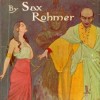
Shanyn Fiske, “Modeling Masculinity: Engendering the Yellow Peril in Fu-Manchu and Thomas Burke’s Limehouse Nights”
This entry deals with the event of the Yellow Peril, which generated fears of “Chinamen” as sexual predators, savage murderers, and criminal masterminds plotting world domination. Curiously, while these images lend Chinese men an aura of powerful virility, popular fiction credited with sensationalizing the Yellow Peril often depicted them as asexual or effeminate. Focusing on the first three novels of Sax Rohmer’s Fu-Manchu series and Thomas Burke’s Limehouse Nights (1916), I challenge the common critical assumption that the feminization or desexualization of Chinese men served to symbolically disempower a political threat. Instead, I suggest that in their interactions with their white counterparts, effeminized and / or desexualized Chinese male characters highlight problems in turn-of-the-century reconfigurations of masculinity. Such problems included recalibrating the Victorian balance between gentlemanly restraint and soldierly aggression in an unstable imperial context; redefining a sense of autonomy in a mechanized world; and renegotiating gender relations in a feminist environment. More broadly, I venture that the critical apparatus of Orientalism, which a number of theorists have applied to Rohmer’s works, is inadequate in explaining the complex interactions between Chinese and Britons in the early twentieth century. In examining the entangled racial and sexual tensions in these works, this entry historicizes the Yellow Peril within a broader context of Western male self-fashioning.
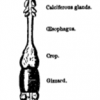
Anna Henchman, “Charles Darwin’s Final Book on Earthworms, 1881”
This article focuses on the publication of Darwin’s final book (1881) in the context of Darwin’s larger attempts to resist the habitual anthropocentrism of human beings. It begins with Darwin’s discussion of animal cognition and the senses of worms. It concludes with his emphasis on the significant effects worm digestion has on the landscape and the fertility of the earth. The article links Darwin’s Worms Edwin Abbott’s 1884 novella Flatland, arguing that both texts are engaged in dismantling human perceptions that stem from possessing a highly visual brain, and that both throw doubt on the belief that a single objective world exists independent of particular observers.
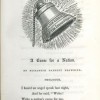
Denae Dyck and Marjorie Stone, “The ‘Sensation’ of Elizabeth Barrett Browning’s Poems before Congress (1860): Events, Politics, Reception”
Elizabeth Barrett Browning’s Poems before Congress paradoxically addresses a political event that never took place: a meeting of European powers to discuss the “Italian question” planned for January of 1860. Nevertheless, the collection addresses several momentous historical developments, including the Second Italian War of Independence in 1859, the intervention of Napoleon III of France in the Italian struggle, and the international conflict his intervention precipitated. Indeed, the book’s publication and the sensation it created in themselves constitute a plurality of events, since the collection appeared under differing titles in England and America and encountered differing responses in each country. Contrary to the still dominant critical view that the volume was almost universally denounced, its reception was shaped by diverse locations, shifting chronological contexts, and conflicting political affiliations. Close analysis of the reviews underscores the importance of these wider contexts, which influence what otherwise appear to be primarily literary or aesthetic judgements. At the same time, analysis of varying responses to not only “A Curse for a Nation” but also “Napoleon III in Italy” and other poems in the volume demonstrates a number of recurring points of contention. These include the collection’s title, the politics of interventions across national borders, English liberalism, the nature of democracy, cosmopolitanism versus nationalism, women writers in relation to politics, poetic form, and, most of all, EBB’s representation of Napoleon III—the issue that is front and centre in most of the 1860s reviews and that shaped, in turn, reactions to all the rest.
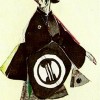
Wendy S. Williams, “‘So Very Japanny’: The British Reception of The Mikado in 1885”
This article examines the writings of The Mikado producers and opera reviewers in 1885. It shows that the British were eager to create a quaint, picturesque, “authentic” image of Japan, based on familiar art objects, in order to ease national anxiety about a quickly developing country that was difficult to understand.
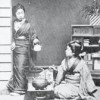
Wendy S. Williams, “‘Free-and-Easy,’ ‘Japaneasy’: British Perceptions and the 1885 Japanese Village”
This essay examines press reviews and accounts of the Japanese Village in London from newspapers and periodicals in 1885. These show that although writers were fairly confident that they “knew” the Japanese culture, they had only a superficial understanding of it, and they often depicted Japanese people as simple, coarse, and inferior. These writings largely reflect British feelings of superiority, enchantment, and confusion regarding Japan, a quickly progressing country that was not easy to classify.
![Figure 2: First Scottish colony for New Zealand. [Reprinted] Copyright People’s Palace Museum, Glasgow Green [ca 1981]. Alexander Turnbull Library, Wellington, New Zealand. Ref: Eph-C-IMMIGRATION-1839-01. Used with permission. http://natlib.govt.nz/records/22730739.](https://branchcollective.org/wp-content/uploads/2017/04/2-First-Scottish-Colony-for-New-Zealand-100x100.jpg)
Philip Steer, “On Systematic Colonization and the Culture of Settler Colonialism: Edward Gibbon Wakefield’s A Letter from Sydney (1829)”
In 1829, Edward Gibbon Wakefield published his first statement of a “systematic” theory of settler colonization, A Letter from Sydney: The Principal Town of Australasia. Wakefield offered a novel economic theory of the relationship between population density and successful colonization, hinging on the establishment of a minimum or “sufficient” price on colonial land, and he spent the next few decades at the forefront of efforts to promulgate and profit from it. The theory of systematic colonization was first put into practice in 1836 in the new colony of South Australia, and then more extensively in New Zealand in 1839; in both cases, speculative mania in Britain precipitated the invasion of thousands of settlers, even though the settlements were as yet unmapped. Wakefield’s theories were also at the center of a new imperial imaginary that emerged in Britain by the 1850s, which established Australia and New Zealand as pastoral locations capable of restoring damaged British subjects. In spurring the vast expansion of migration to Australia and New Zealand, contributing to the genocide and dispossession of indigenous populations, and accelerating the destruction of local ecosystems, systematic colonization constitutes one of the most powerful and destructive examples of the ability of Victorian representations to permanently reshape the globe.
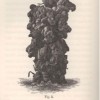
Bryan B. Rasmussen, “Invertebrate Psychology before and after Darwin”
In his B Notebook on Transmutation (1837-38), Charles Darwin speculated that the “introduction of man” on the evolutionary scene was “nothing” compared to the insect, which he considered “the first thinking being.” More than any other class of life in the eighteenth and nineteenth centuries, insects and other invertebrates raised questions about the origins of mental experience and about the relationship between human and nonhuman nature. Their minds represented scientific insight at its limits, where traditional modes of observation and empirical experiment gave way to less certain tools of analogy and thought experiment. Darwin’s Origin of Species (1859) provides a useful historical touchstone for the evolution of these analogies and thought experiments, having constrained the field of plausible analogy from one that included physiology, philosophy, and theology, to the central analogy of common ancestry, or the shared evolutionary history of organisms. However, while Darwin’s theory of descent may have displaced other analogies, it did not replace them, and well into the late-nineteenth and early-twentieth centuries, invertebrate minds continued to inspire a variety of both novel and relic assumptions and methods for examining mental affinities with our spineless distant cousins.

Philip Howell, “June 1859/December 1860: The Dog Show and the Dogs’ Home”
In 1862, the Victorian journalist John Hollingshead (1827-1904) noted the comparability and complementarity of the Dog Show and the Dogs’ Home, both recent innovations: the first true dog show was held in June 1859 and the Temporary Home for Lost and Starving Dogs (now the Battersea Dogs and Cats Home) was founded in December 1860. This article considers these innovations as key events in the culture and treatment of companion animals in Britain, and their contribution to the Victorian “invention” of the dog.
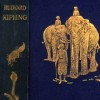
Mario Ortiz-Robles, “Animal Acts: 1822, 1835, 1849, 1850, 1854, 1876, 1900”
What does the history of animal rights have to tell us about Victorian Britain – and how do legislative gains, specifically Parliamentary Acts, appear when read in tandem with theatrical performances and literary depictions of animals? This article reads the former category alongside the latter two, paying particular attention to how artistic representations of animals, including Rudyard Kipling’s The Jungle Book, blur the lines between human and animal behavior. In doing so, it sheds light on how animals were figured as part of a racialized discourse, using Foucault’s notion of biopower to help frame the complex ways animal rights, and animalism, were portrayed in politics and culture.
